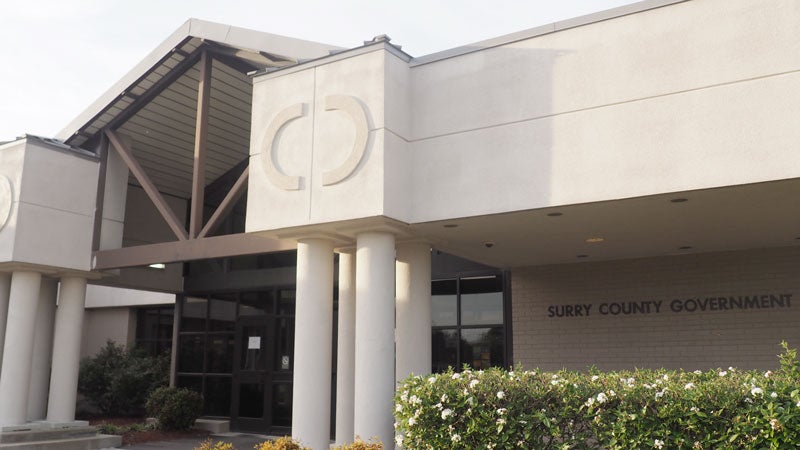Reassessment
Published 6:27 pm Tuesday, April 16, 2019
Supervisors weigh whether to keep some of the increase
By Diana McFarland
Managing editor
Windsor District Supervisor Joel Acree wants county staff to bring back a budget that doesn’t include the additional reassessment revenue — a potential cut of about $1.2 million.
Smithfield District Supervisor Dick Grice was also interested in that scenario for the proposed fiscal 2020 Isle of Wight County operating budget, which now stands at $78 million.
“It’s a little bold,” said Acree of Isle of Wight County Administrator Randy Keaton including that extra revenue. The issue was discussed at Thursday’s budget work session, the first of several before the document is approved in May. {mprestriction ids=”1,2,3,4,5,6″}
Grice said the $1.2 million was “a big number,” but to cut it is “certainly a realistic goal to achieve.”
The additional $1.2 million is the result of increased property reassessments of 4.4 percent. By law, the county can keep one percent of the increase ($378,647) and must advertise the additional amount to the public. In this case, the additional revenue is estimated to be equivalent of a 2.7-cent real estate tax increase, but the tax rate would technically remain the same.
If Isle of Wight opted not to keep the increase, it would have to lower the tax rate, which is called being revenue neutral.
Hardy District Supervisor Rudolph Jefferson was leery about the county not keeping the additional revenue, as it has run on a tight operating budget over the past few years.
It will put the county back to where it was on several fronts, such as fire and rescue, the cost of which is growing along with the population, said Jefferson.
Board Chairman William McCarty was concerned about raising real estate taxes on an expanding senior population, many of who live on a fixed income.
The county has a good deal of salaries and benefits, but if government grows and services do not, that’s a challenge, said McCarty.
Keaton went over the notable increases proposed in the budget, including an additional $1 million for schools over last year, $398,000 in tax relief for the elderly and disabled, $215,000 for fire and rescue and $213,000 for parks and recreation.
Keaton said his staff had already cut $932,941 from the original schools request and what remained were mandatory items, such as guidance counselors and special education teachers.
The budget also calls for eight new full-time positions for a total of $592,874. Of those, two in animal control were approved earlier this year.
Another proposed increase was a 2 percent cost-of-living wage increase for county employees, at $360,000.
Keaton said the 2 percent was in line with salary increases among localities across the region.
County employees have received several pay increases over the past few years.
The current fiscal year budget included a 2 percent across-the-board salary increase, as well as a merit increase for eligible employees. In fiscal 2018 there was a 1.5 percent increase and in 2015, a salary and compensation study resulted in an average pay increase of $3,700 for full-time employees. That was preceded by an overall pay increase of 2 percent to cover an increase in health insurance premiums.
Isle of Wight Assistant County Administrator Don Robertson said staff would likely return with a revised budget proposal, minus the additional reassessment revenue at its April 25 work session.
Taxes follow values, needs
Historically, however, the county’s tax rate has ebbed and flowed with real estate values and county needs. Eighteen years ago, as the new century dawned, the county real estate tax rate was 77 cents. The heady days of the housing bubble prompted the Board of Supervisors to cut the rate to the bone, anticipating more growth and revenue, and it declined most years until it reached a low of 52 cents in 2008. That was the same year the economy crashed and a year before International Paper temporarily shuttered its paper mill in the southern end of the county.
It was also a period in which the county was spending money on capital projects, including a new courts building, animal shelter, fire and rescue buildings and the long-term Norfolk water agreement.
Revenue went south, costs went north and the supervisors began acknowledging the difference between the two in 2012 when they began restoring the tax rate. By 2014, it had climbed back to 73 cents, just below where it had been 15 years earlier, and in 2016 went to 85.
The current tax rate represents a 10 percent increase since 2000.
Compared to neighboring counties, Isle of Wight is near the top, but below cities located nearby:
Counties
Prince George 86 cents
Isle of Wight 85 cents
Southampton 85 cents
James City 84 cents
York 79.5 cents
Gloucester 69.5 cents
Surry County 71 cents
Cities
Hampton $1.24
Newport News $1.22
Poquoson $1.14
Suffolk $1.11
Chesapeake $1.04
Franklin $.99
West Point $.72 (town)
{/mprestriction}





